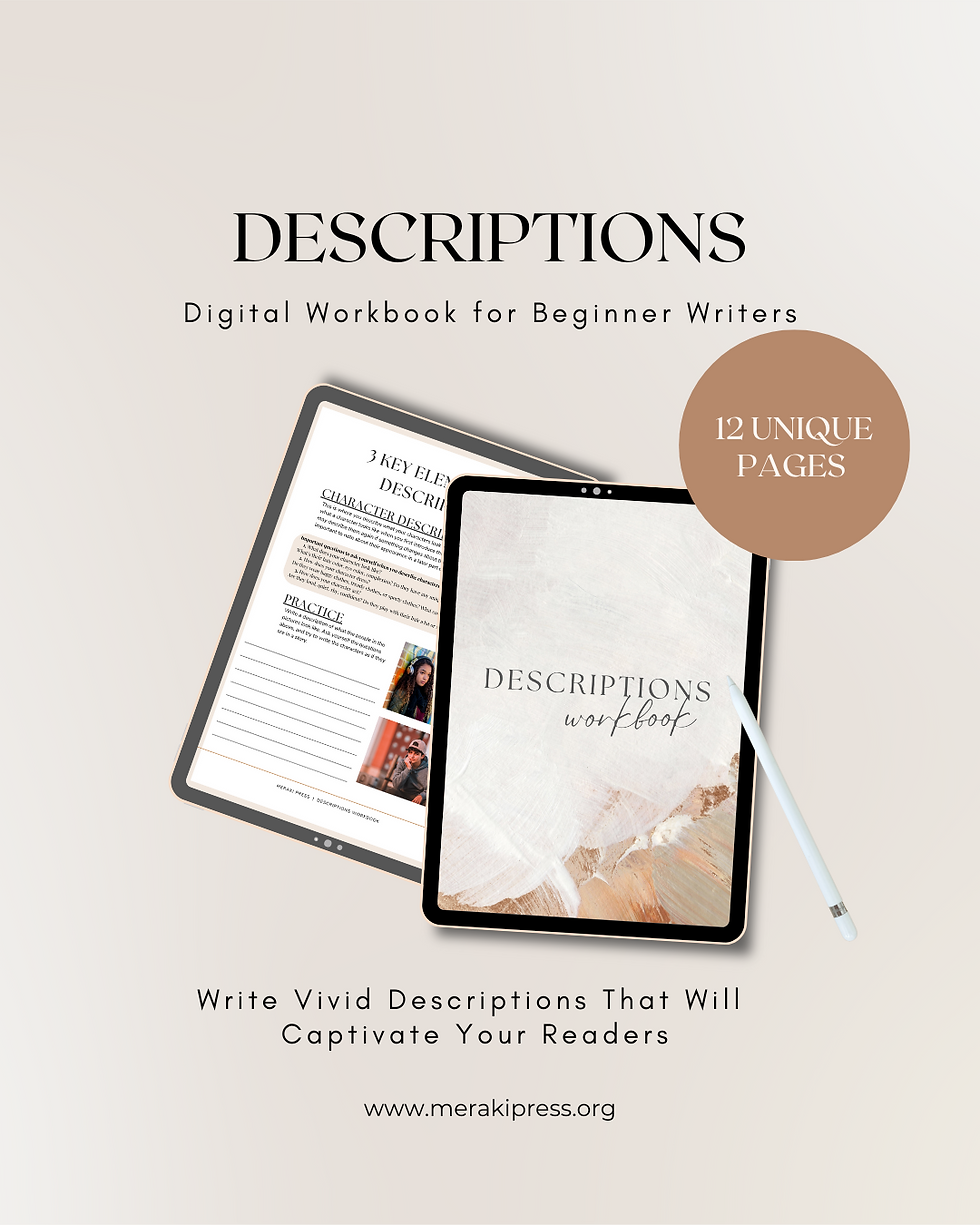Bringing Your Setting to Life
- Katie Zeliger
- Nov 7
- 4 min read
How do you make readers feel like they're inside your story? With a great setting!
A great setting is more than just a backdrop, it’s a character in its own right. Whether you’re crafting a sprawling fantasy world, a small-town mystery, or a heart-pounding thriller, your setting should immerse readers, making them feel like they’ve stepped inside the story.
But how do you bring your setting to life without overwhelming your reader with endless descriptions? Let’s dive into the key techniques.

Step 1: Using Sensory Details
One of the most effective ways to ground readers in your world is by engaging the five senses. Instead of simply telling readers what a place looks like, let them feel it.
Sight: What stands out? Is the city bathed in neon lights, or does fog creep over the cobblestone streets?
Sound: Is there the distant murmur of a crowded café? The eerie silence of an abandoned house?
Smell: Does the air carry the scent of salt from the ocean or the metallic tang of blood?
Taste: Can the protagonist taste the bitterness of burnt coffee or the sweetness of fresh strawberries at a summer market?
Touch: Is the character’s skin sticky from humidity, or are they bundled in scratchy wool?
By layering in these sensory details, you create an immersive experience that makes your world feel tangible.

Step 2: Showing Setting Through Character Perspective
Two characters can walk into the same place and experience it completely differently—and that’s where the magic happens. The setting should be filtered through your character’s emotions, personality, and experiences.
A homesick traveler might describe a city as cold and unwelcoming, noticing the gray buildings and unfamiliar faces.
A thrilled newcomer might see the same city as vibrant, full of opportunity, and bursting with energy.
Instead of writing a neutral description, infuse the setting with your character’s emotions. It makes the world more engaging and personal.

Step 3: Avoiding Info-Dumps—How to Weave Setting Naturally Into the Story
A common pitfall is overloading the reader with long paragraphs of setting descriptions. Instead, aim for a more natural approach by:
✔ Dripping details in small doses – Let bits of description emerge as the character interacts with the world.
✔ Blending setting with action – Instead of saying “The forest was dark and eerie,” show the character stepping on brittle leaves, hearing twigs snap, and feeling the chill of the damp air.
✔ Using dialogue – Have characters comment on their surroundings naturally (“This town hasn’t changed a bit.”)
By weaving setting into the story’s movement, you keep the pace tight while still building a rich world.
Examples from Bestselling Books
Want to see this in action? Here are some examples of immersive settings done right:
📖 The Night Circus by Erin Morgenstern – Uses lush, poetic descriptions that make the reader feel like they’re walking through the magical black-and-white circus.
📖 The Shining by Stephen King – The Overlook Hotel is practically a character itself, with its shifting hallways, eerie isolation, and creeping sense of dread.
📖 Where the Crawdads Sing by Delia Owens – The marsh setting is infused with the protagonist’s love for nature, making it feel alive and deeply personal.
Each of these books uses sensory details, character perspective, and seamless worldbuilding to make their settings unforgettable.
Exercises to Strengthen Your Worldbuilding
Want to improve your setting descriptions? Try these quick exercises:
Describe a place you love (or fear) in 3 sentences. Focus on sensory details!
Write a scene where a character enters a new place, but reveal their emotions through the way they perceive the setting.
Take a passage from your current work and trim excess description while keeping the scene vivid.
By practicing these techniques, you’ll create settings that don’t just exist—they breathe, move, and pull readers in. Now, go make your world come alive!
Need some more help? We also have digital workbooks to help you dig deeper into your craft! Check out these workbooks for Descriptions in Setting and Worldbuilding: Descriptions for Adult/YA Fiction, and Descriptions for Middle Grade Fiction.
Do you struggle to write descriptions that bring your stories to life? Do you worry that your descriptions are boring, unoriginal, or just plain bad?
Inside the workbook, you'll find:
Lessons on the different types of descriptions and how to use them effectively
Exercises to help you practice writing different types of descriptions
Tips and tricks from professional writers
Common mistakes to avoid
By the end of the workbook, you'll be able to write descriptions that will:
Set the scene and create a sense of place
Introduce your characters and make them come alive
Build suspense and anticipation
Evoke emotions in your readers
Whether you're writing fiction, non-fiction, or creative content, the Descriptions Workbook for Beginning Writers can help you improve your writing skills and take your stories to the next level.

Are you writing a novel and need help bringing it to life? Meraki Press exists to serve first-time authors as they grow and launch their passion projects!
We offer complete packages for publishing or separate services for every step of drafting to distribution!








Comments